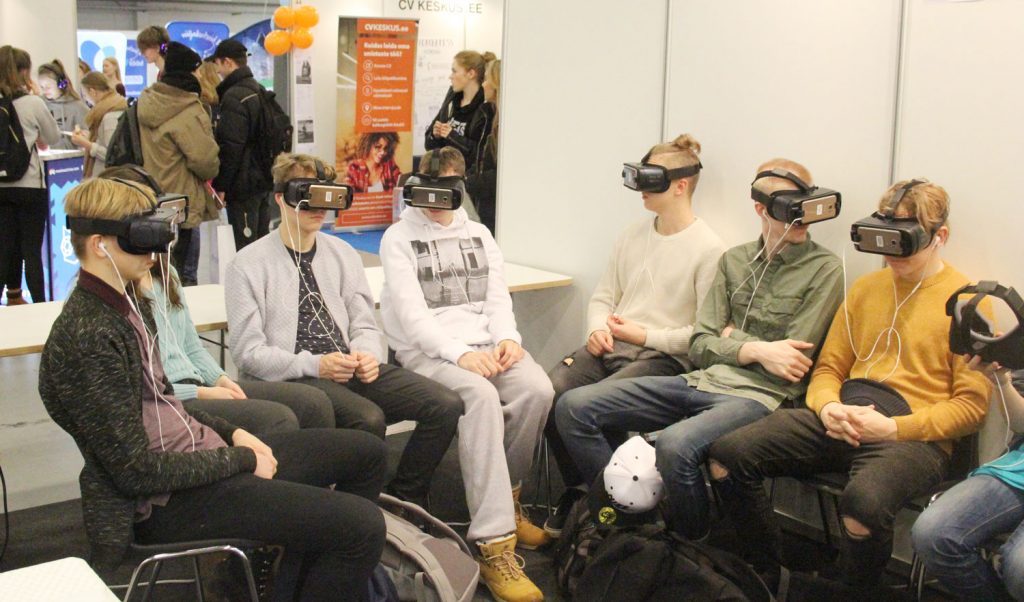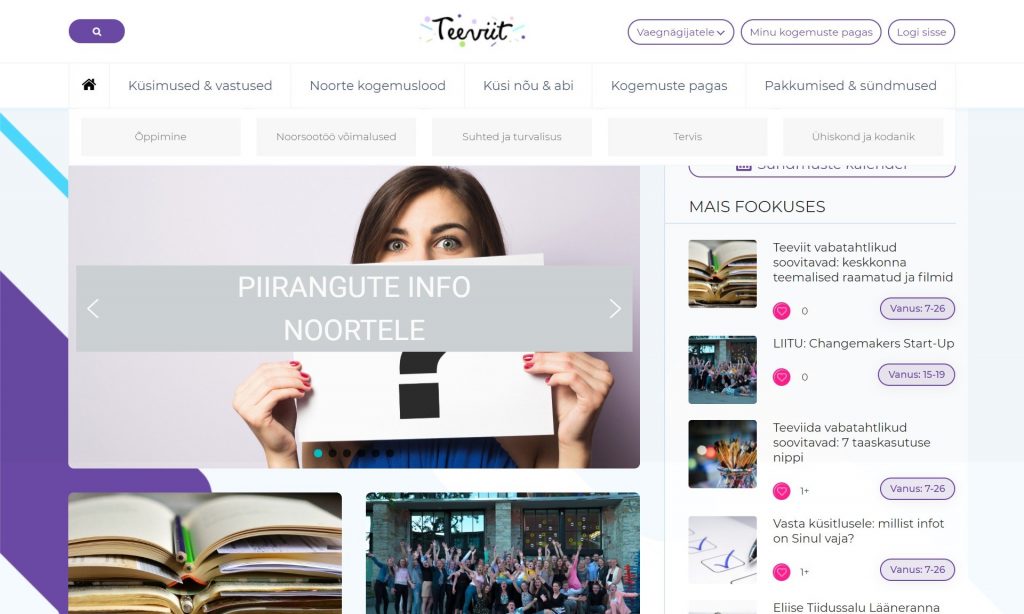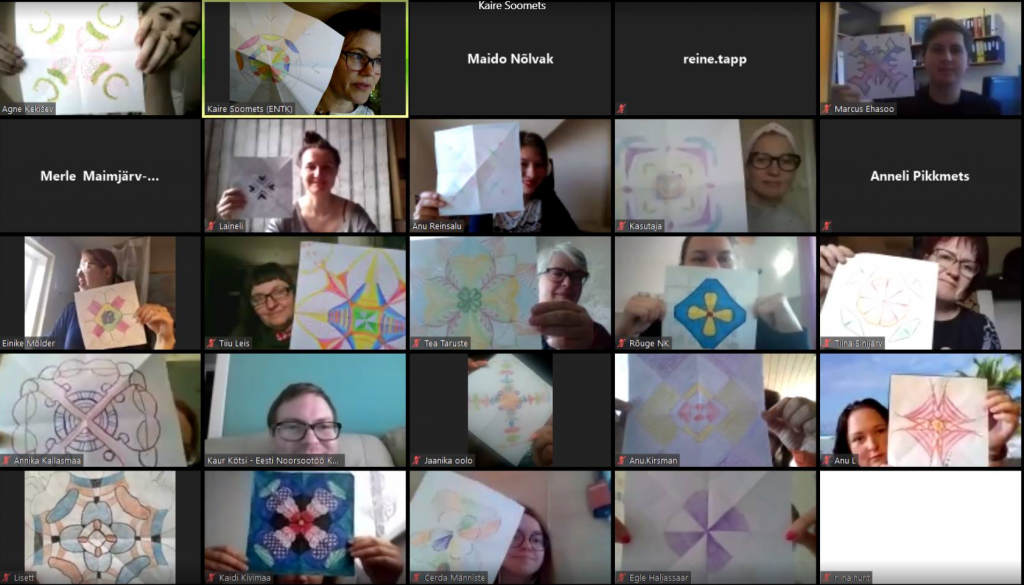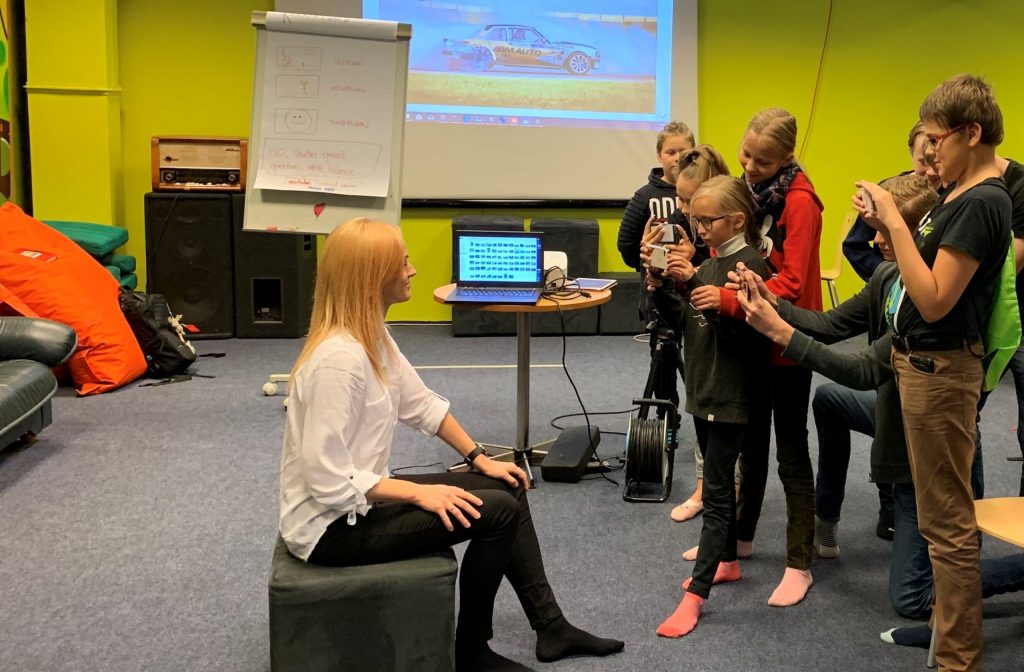Ülly Enn, a youth field enthusiast and expert, highlights the approaches undertaken to help young people in Estonia during the coronavirus crisis.
On 18 May, the emergency situation declared in Estonia due to the spread of coronavirus, came to an end. As the restrictions ease gradually, all organisations in the fields of youth – youth centres, hobby schools, offices of youth organisations and sport facilities – are allowed to operate again under special conditions. This article serves as retrospective to some key strategic approaches undertaken in youth field in Estonia during the emergency situation, hoping these reflections would be helpful for designing the best possible solutions for young people for the times ahead.
A contemporary youth policy
Estonia has been positively recognised for its contemporary youth policy. In October 2019, Estonia was awarded the Future Policy Award 2019 for youth civic engagement and participation for sustainable development and peace by the World Future Council.
In 2018, the OECD’s report, “Youth Stocktaking Report”, highlighted Estonia as one of the few OECD countries where the trust towards the government is higher among young people compared with older generations, suggesting this might be the impact of extensive development of youth strategy in the country. Clear vision is needed to empower young people and support them to gain essential competences for their own well-being as for their role as active citizens, the report noted. Word. But how do you make sure that no one is left apart, especially in times of social distancing?

Let me confess right away that there has been no magic wand found for that in Estonia. Also, it would clearly be a mission impossible to try to compile a complete list of all the support activities undertaken by diverse community of youth field partners during the emergency period on local and national levels. Hence, I highlight some of the approaches.
One of the strengths of Estonian youth field is its diversity as it helps respond to a wide variety of interests and needs of young people in the age of seven to 26 years, as defined in Estonia. During the emergency situation, it was considered important on the state level to make sure that the youth field activities would continue to offer young people opportunities for meaningful non-formal learning.
In 2016, a national Concept for Smart Youth Work was adopted in Estonia, presenting an innovation concept for youth field with specific emphasis on digital solutions. The smart youth work solutions have proved to be critically important for quick adaptations now.
A national youth portal
With the emergency situation being declared, a need for reliable information was recognised in youth field, reasoning the launch of several special web sites, online resource collections, dissemination of good practices etc.
Young people have their own specific needs to understand and cope with the pandemic. Hence a national youth portal “Teeviit” (“Signpost”) was amended to provide youth information in both Estonian and Russian. The portal has made the voice of youngsters more heard through online surveys and challenges.

For example, during the spring school break, a youth information campaign was conducted with various partners, including the Estonian police as well as social media influencers, receiving approximately 320,000 views and attracting more than 800 young people with online challenges. A team of young volunteers was actively engaged in designing the user-friendly approaches in youth information, considering the specific situation of crisis times.
Virtual youth centres and activities
There are 281 open youth centres in Estonia operating at local level and considered to be the closest low-threshold engagement opportunity for young people. During the coronavirus crisis, the physical premises of youth centres were closed, hence many continued as virtual youth centres in digital platforms like Roblox, Discord etc and engaging youth actively with e-sports and in social media.
These trends have already brought up a whole list of both potentials and challenges related to new smart approaches: from very positive tendencies to be able to reach out to new young people that prefer virtual youth centres to physical ones; but also issues of risk and safety in digital environments, competences of youth workers in this respect etc.
The need for mobile youth work has increased, also related to the need to avoid youth gatherings in public spaces, to help young people understand the importance of restrictions as well as to raise their know-how on alternative smart youth work activities. Approaches taken differ by municipalities but alongside with mobile youth work teams there have been some very innovative examples introduced, eg using drones connected with audio announcements for youth in public spaces.
Youth organisations and their umbrella organisations have reoriented to provide sufficient virtual alternatives to their planned physical activities, such as online challenges and webinars.
For example, the Estonian Scout Association teamed up with one of the leading adventure tour organising companies in Estonia. They introduced an innovative smart hiking format for their annual spring hike, resulting with more than 500 participants taking part both in individual hiking as well as enjoying the virtual campfire evening on YouTube. There were participants from Estonia to Australia, serving as an example on how the usual limits of physical youth work would be overcome with smart solutions.

Aid for hobby schools
In Estonia, there is a long tradition of hobby education that is a unique, curricula-based non-formal learning service where young people participate voluntarily and are supported by professionals in order to develop their competences, be it in music, sport, tech or other areas of their interest. It is also one of the most popular activities in youth field in Estonia, with more than half of the overall youth population participating and a vast network of hobby schools all over Estonia.
During the crisis also hobby activities and hobby education were reorganised remotely – virtual music, dance, arts, sports, robotics and other ICT engagements have been introduced.
At the same time, as more than 70% of hobby schools are private and dependent on tuition fees, their sustainability is of special concern. In cases where the hobby schools were not able to reorient their activities into virtual formats or parents were not able to continue their payments due to economic conditions, these organisations were faced with risks for closing permanently. The Estonian government stepped in and allocated financial aid to hobby schools, to ease the negative financial impact of crisis in youth and education field.
School youth workers continued to support the school youth councils and extra-curricular community activities online to reinforce the support to school democracy and participation. Live online discos with up to a thousand participating students took place; several apps were used to find out how young people were doing in distance learning and what kind of support they would need – these are just some of the examples.

Enhanced cooperation
“If there is anything positive out of the crisis already visible, it is enhanced cooperation,” is one of the repeated statements from numerous webinars and online meetings conducted in youth issues over the past months. Youth field umbrella organisations are actively engaged together with the Estonian education ministry and the Estonian Youth Work Centre to visioning the future perspectives of youth field in relation to current crisis.
With its high number of startups per capita, Estonia has a lot of potential in this regard. Many startups developing educational solutions announced that during the crisis, their products would be available for free for organisations in youth and education fields – both in Estonia and abroad, for greater community support.
As another example, the Estonian Youth Work Centre teamed up with the locally founded startup, Veriff, and other partners and launched a web-based system for youth workers to apply for occupational standard during the spring application round in 2020 within less than 10 days since the emergency was declared.
Also, a COVID-19 thematic hackathon, “Hack the Crisis: Youth”, was organised by a wide circle of star-up and public sector partners for young people aged 16-19, to empower youth ideas and solutions to tackle the pandemic and its potential impacts. What if we keep this enthusiastic “hands-on and united” approach for cooperation also after the crisis?
Corner stones for future development of youth-centred public policies
To conclude, let me pinpoint three ideas I would hope to see as corner stones for future development of youth-centred public policies and services.
Young people have demonstrated their inspiringly powerful resource to be able to rapidly adopt to changes. Yet, to do so, favourable conditions need to be created for youth, especially considering their needs for reliable youth-friendly information, support to mental health and special attention to youth at risk, to name a few. This means greater attention and efforts are needed from all the adults next to young people, also from youth themselves regarding their peers.
Youth workers have a critically important role in creating trustful relationship and providing meaningful support for young people. For the sake of sustainability of such professional quality support for the youth, it is important that a diverse variety of youth services would be continued as soon as possible now and financial support to these would be continued despite the challenging economic conditions.

Nothing for the youth without youth! Sounds good, but how? As one of the steps, contributions from the young people themselves with their needs and ideas would need to be reinforced now, through setting up youth councils in local governments and state institutions, through stronger student representations in schools, in youth work organisations through service design and co-creation.
Yet, these are all the formats we already know and to certain extent already exploit – what else could be there to have young people have their say in formats that suit them best? And so that no one would be apart? Hopefully, these and many other exciting questions to further develop best support to youth will be continually explored and discovered.
The opinions in this article are those of the author. Cover: A girl playing a game in virtual reality. The photo is illustrative. Photo by Frank Vessia.

